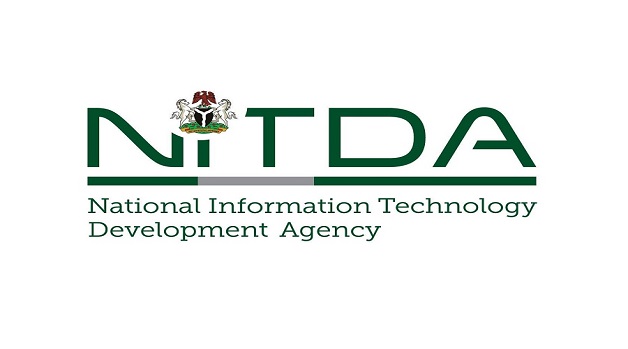E-Business
Digital Infrastructure in Africa to Witness Boost Post Pandemic – Coker

COVID-19 pandemic has opened doors to new ways of communications in the face of lockdown of cities. As a result organisations have embrace working remotely which before now were used by few. Today, workplace software providers such as Microsoft, Google and Zoom witness increased demand for their work-from-home services.

According to Microsoft’s Work Trend Index, Microsoft Teams reached a new daily record of 2.7 billion minutes of use in one day, representing a 200% increase from 900 million minutes on 16 March.
Against this backdrop that Ayotunde Coker, managing director, Rack Centre, a data centre service provider explores the lockdown situation and the benefits it provides for the growth technology infrastructure in Nigeria and Africa as a whole.
Looking at how the world will look like post-COVID-19, Coker said: “One thing is clear, global technology has shown the capacity to be elastic and to scale.
“Working from home will be more accepted. But I don’t think it is just going to be working from home. There is something I call Semi-flex office locations. Imagine someone traveling from Agege to a contact centre somewhere on the Island which is about three hours traveling (due to traffic situations), you will find semi-flex office locations about half an hour into the journey and walk in, put your laptop down and with your headphone you connect to the contact centre and perform some routine due to the exigencies of your assignment. So, you are kind of working from home but from a semi-flex location.”
He said that outsourcing will ensure business sustenance. “Over the years we have been explaining to companies the need to focus on their core-business areas and outsource the none-core areas. Lessons learnt now will reinforce and deliver that value.
“EduTech will gain momentum. Children are working and studying at home now because they have been sent home due to COVID-19. What they require now is the data to follow their lectures online. Universities in the UK and US have been doing this for ages.
“In-country, we have the National Open University of Nigeria (NOUN) where most of the courses are online. So, we are going to see a change in the way we interact with our educational institutions.
On healthcare technologies, Coker said it will receive massive attention. “We now have high quality video augmented reality interaction with experts anywhere in the world; remote key control non-intrusive technologies are now being done by interaction through technology with our doctors in Nigeria.
“Quick consultation of experts will become normal; you can consult with all your patients before you travel to a place. So, by the time you see the patients they have been pre-consulted. This will save significant amount in health tourism.
“We are moving to an era where digital conferencing becomes normal; you don’t have to travel thousands of miles to attend a conference. You start to use augmented reality (AR) for you to virtual visit a stand of a company and interact.
“Docusign digital and blockchain technology will reach a new level of acceptability and use where contracts, agreements, real estate businesses, etc., will be enabled through technology.
“Internet Exchange volume will grow significantly and the world will become more digitally connected on the information super-highway.
“Data centre and technologies will now move to the Edge because businesses will not tolerate latency; the volume of data will be such that you will have to be on the Edge to get closer to the point of use.
“One of the things we have been doing is ensuring that customers with us continue to operate and I am glad that we are able to ensure that. Secondly, we are moving and doing our bit of making sure that Nigeria and our location is supporting the digital technology for West Africa. It is certainly a leading point for digital infrastructure in Africa.”
According to him, “global supply chain will change and it is a benefit for Africa. Most countries will embrace changes; enabling digital process and key changes that support ease-of-doing business. We have a good geo-physical location. For us it is not just going digital but how we optimize how we plug in to the global supply chain. And I think it is a great opportunity for us to embrace”.
He noted that it will be interesting to see how the new normal changes how we bring the information super-highway to the good old super-highway. “How we optimize relationship of the new technology with the established technologies, because we have to strike a good balance. And I believe that the balance we strike will be much more optimal in the way we drive things forward.
Speaking on the operations of his firm, Coker disclosed that Rack Centre had since doubled its capacity and had put infrastructure in place that would help organizations host their data locally to have access to their data from a remote location, without physically appearing at the data centre, a situation, he said, would boost efficiency and reduce costs of operation.
He said the innovation from Rack Centre has helped it to engage and have connections to over 35 of its major carriers and Internet Service Providers (ISPs) in Nigeria, Tier 1 networks, pan African international carriers, and direct connection to all five undersea cables serving the South Atlantic Coast of Africa, and that every country on the Atlantic coast of Africa is directly connected to Rack Centre. He claimed that despite the lockdown, Rack Centre business is still up and running.
E-Business
Microsoft Servers Hacked by Chinese Groups

Chinese “threat actors” have hacked Microsoft’s SharePoint document software servers and targeted the data of the businesses using it, the firm has said.

China state-backed Linen Typhoon and Violet Typhoon as well as China-based Storm-2603 were said to have “exploited vulnerabilities” in on-premises SharePoint servers, the kind used by firms, but not in its cloud-based service.
The US tech giant has released security updates in response and has advised all on-premises SharePoint server customers to install them.
“Investigations into other actors also using these exploits are still ongoing,” Microsoft said in a statement.
The firm said it had “high confidence” the hackers would continue to target systems which have not installed its security updates.
It added that it would update its website blog with more information as its investigation continues.
Microsoft said it had observed attacks in which hackers had sent a request to a SharePoint server “enabling the theft of the key material by threat actors”.
Charles Carmakal, chief technology officer at Mandiant Consulting firm, a division of Google Cloud, told reporter, it was “aware of several victims in several different sectors across a number of global geographies”.
Carmakal said it appeared that governments and businesses that use SharePoint on their sites were the primary target.
A number of adversaries who stole material encoded by cryptography were then able to regain ongoing access to the victims’ SharePoint data, he said.
“This was exploited in a very broad way, very opportunistically before a patch was made available. That’s why this is significant,” Carmakal said.
Carmakal said the “China-nexus actor” was deploying techniques similar to previous campaigns associated with Beijing.
Microsoft said Linen Typhoon had “focused on stealing intellectual property, primarily targeting organizations related to government, defence, strategic planning, and human rights” for 13 years.
It added that Violet Typhoon had been “dedicated to espionage”, primarily targeting former government and military staff, non-governmental organizations, think tanks, higher education, the media, the financial sector and the health sector in the US, Europe, and East Asia.
Meanwhile, Storm-2603 was “assessed with medium confidence to be a China-based threat actor”.
E-Business
NIMC Warns Nigerians of Fake NIN Website

National Identity Management Commission (NIMC) has issued a public warning that it is not associated with NINcard.com.

According to the commission, the website has been circulating online to offer services for Nigerians seeking National Identification Number (NIN) services.
NIMC, in a post on its official X account on Wednesday, said, “NINcard.com is not in anyway affiliated to NIMC. Stay vigilant!”
The warning was accompanied by screenshots of fake payment receipts and OTP request pages from the website, both of which were boldly stamped “FAKE” by NIMC to alert the public.
E-Business
NITDA, API Partner Against Harmful Online Content

National Information Technology Development Agency (NITDA), in partnership with the Advocacy for Policy and Innovation (API), has convened a one-day workshop in Abuja to advance dialogue on the draft Online Harm Protection (OHP) Bill to confront harmful online content.

The bill, a rights-based, locally rooted, and multi-stakeholder initiative, is aimed at addressing the challenges of the digital age.
The event, which held yesterday, brought together government officials, civil society, academics, digital platforms, and legal experts to shape a policy framework designed to combat online ills such as cyberbullying, disinformation, hate speech, digital exploitation, and gender-based violence, while safeguarding democratic freedoms and digital inclusion.
In his keynote remarks, Kashifu Inuwa, director general, NITDA urged a paradigm shift in the way society engages with digital technologies.
“For almost two decades, we have viewed digital technology through a consumer lens. But these technologies are not just products and services. They are transforming how we live, work, and interact. They shape our politics, our society, and our democracy,” he said.
Warning against unaccountable digital power in the hands of private corporations, the DG likened the digital journey to the tale of Alice in Wonderland, where initial fascination with innovation has given way to deeper concerns about privacy, autonomy, and manipulation by big tech platforms.
“We thought we were using Google, but now we realise Google is using us. Social media, once a tool of expression, has become a tool of surveillance and influence,” Inuwa noted.
He, therefore, emphasised the urgency of developing a democratic and accountable framework. He explained that following the 2021 Twitter ban, NITDA facilitated dialogue between the government and platform operators, leading to a Code of Practice that stressed Nigeria’s sovereignty and legal standards.
According to him, the same process birthed the multi-stakeholder steering committee and the OHP White Paper in December 2024, laying the foundation for the current legislative push.
Earlier in her opening remarks, Victoria Manya, co-founder, API, observed the moral and civic necessity of the bill.
Her words: “The internet did not break society, it merely revealed its unfiltered version. Every day, Nigerians are exposed to harassment, disinformation, exploitation, and even algorithmic violence. The OHP Bill is not a war on the Internet. It is a peace offering to its users, a social contract for a digital future that is safe, inclusive, and democratic.
“We cannot answer the question of algorithmic power with unchecked state control. We must answer it with shared, rights-based governance. This bill must not be written for the people, but with them.”

 E-Financial3 days ago
E-Financial3 days agoKuda Unveils New Wallet for Multiple Currencies

 Telecom3 days ago
Telecom3 days agoTelcos Resume SIM Card Sales after 2-Week Halt

 Telecom3 days ago
Telecom3 days agoNigeria, Others Achieve 84% Adult Mobile Phones Penetration

 E-Business3 days ago
E-Business3 days agoHow AI Alert by Airtel is Transforming Mobile Security in Africa

 Telecom2 days ago
Telecom2 days agoGlo Launches Nigeria’s First-of-its-kind Device Protection Plan

 E-Business3 days ago
E-Business3 days agoNITDA, API Partner Against Harmful Online Content

 Telecom2 days ago
Telecom2 days agoTelcos: How and Why Network Services have Been Poor

 News3 days ago
News3 days agoHorn of Africa Leaders Seek Enhanced Digital Integration for Increased Regional Growth

























